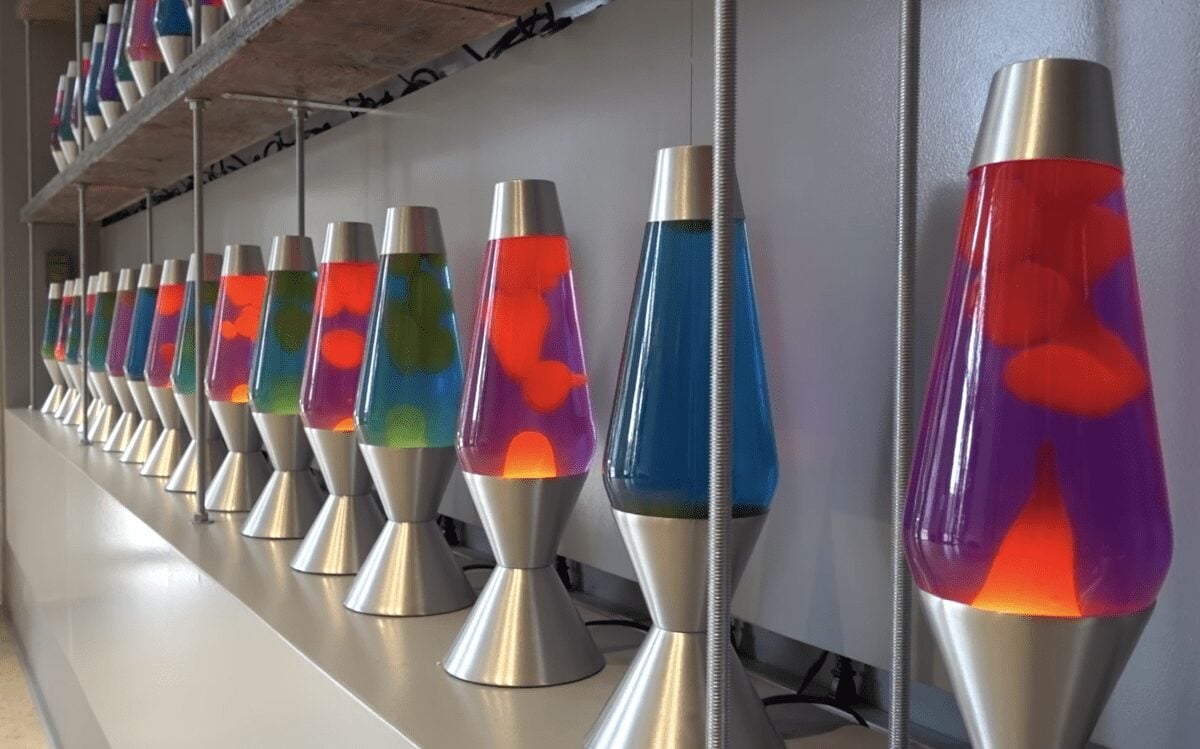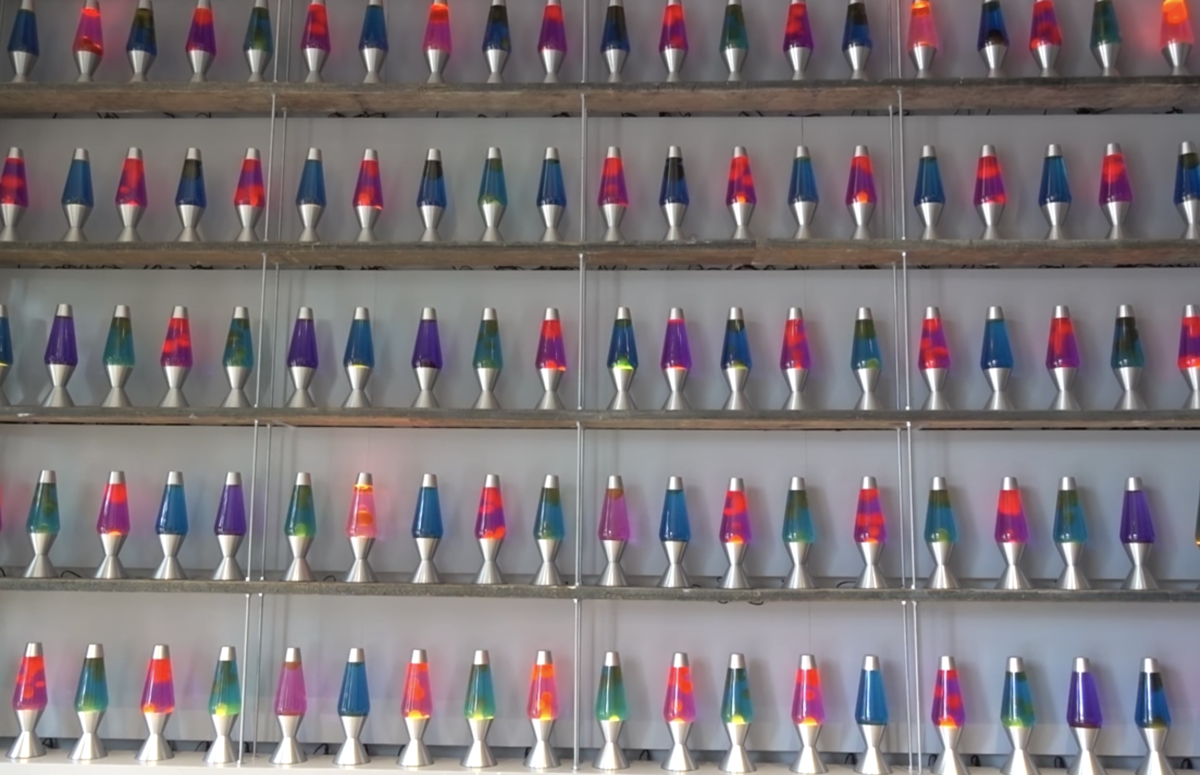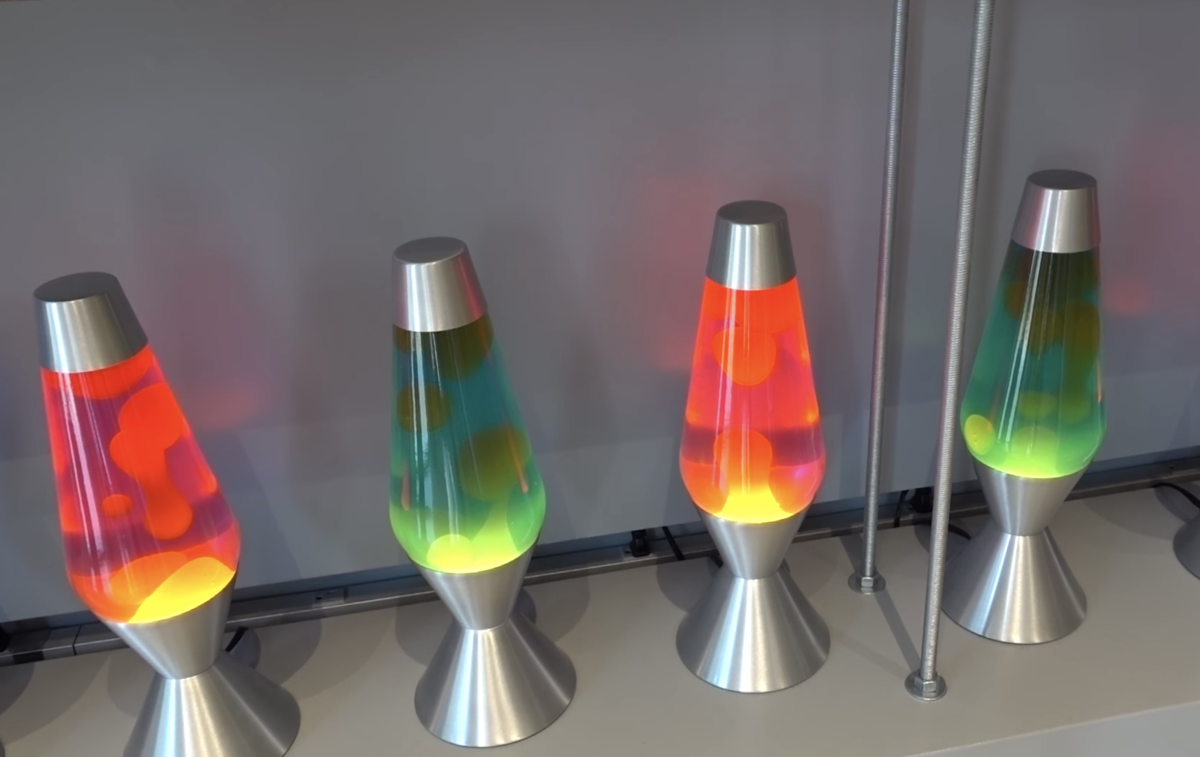The randomness of of lava lamps helps secure 10 percent of the internet
What’s encrypting your internet surfing? An algorithm created by a supercomputer? Well, if the site you’re visiting is encrypted by the cybersecurity firm Cloudflare, your activity may be protected by a wall of lava lamps.
Cloudflare covers websites for Uber, OKCupid, & FitBit, for instance. The wall of lamps in the San Francisco headquarters generates a random code. Over 100 lamps, in a variety of colors, and their patterns deter hackers from accessing data.
As the lava lamps bubble and swirl, a video camera on the ceiling monitors their unpredictable changes and connects the footage to a computer, which converts the randomness into a virtually unhackable code.
Codes created by machines have relatively predictable patterns, so it’s possible for hackers to guess their algorithms, posing a security risk. Lava lamps, add to the equation the sheer randomness of the physical world, making it nearly impossible for hackers to breakthrough.
You might think that this would be kept a secret, but it’s not. Simply go in and ask to see the lava lamp display. By allowing people to affect the video footage, human movement, static, and changes in lighting from the windows work together to make the random code even harder to predict.
So, by standing in front of the display, you add an additional variable to the code, making it even harder to hack.




